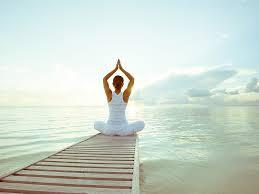manifestations
Yoga dictionary. Vritti
 More often than not, the mind is either in a state of experiencing the past or planning for the future. This forces a person to experience many times again the suffering already experienced in the past, or to worry about their future. All these actions of the mind are due to its fluctuation. The Yoga sutras of Patanjali deal with the concept of Vritti.
More often than not, the mind is either in a state of experiencing the past or planning for the future. This forces a person to experience many times again the suffering already experienced in the past, or to worry about their future. All these actions of the mind are due to its fluctuation. The Yoga sutras of Patanjali deal with the concept of Vritti.
Translated from Sanskrit “Vritti” means ‘excitement’, ‘hesitation’. A comparison may be made with a pond whose water is at rest. And in this case, it reflects the Moon. By the Moon one can understand objective reality, which, provided the mind is calm, is reflected in it without distortion. When the water begins to be affected by the wind, it begins to fluctuate, and the reflection of the moon becomes distorted. The water in the pond is the mind of the living entity, and by the wind one can mean just Vritti — its vibrations. And under the influence of Vritti, the mind begins to distort objective reality. That is the danger of such a thing as Vritti. Continue reading
The purpose of yoga. Ashtanga Yoga Patanjali (part 2)
 The importance of asanas in yoga practice
The importance of asanas in yoga practice
So, yoga classes begin with oneself, with one’s lifestyle and with a restructuring of one’s thinking. Yoga is primarily an internal individual work and there are no competitors in it, since only a person himself can show his life whether he is engaged in yoga or not. However, the third stage of yoga is asana, the use of various body positions. What are the different positions of the body used for? In order to enable the internal, hidden reserves of the human body. This step is used when the student subsequently wants to move on to more powerful internal practices. This stage is auxiliary, it helps to generate internal energy in order to subsequently safely and painlessly go to the next stages of yoga practice. In India, a ha-tha yoga system was invented for this purpose, in Tibet there is another, Tibetan yoga, there is also Chinese qi-gong gymnastics, which is also essentially a Chinese form of yoga. All kinds of martial arts came, in essence, from this source. Continue reading

